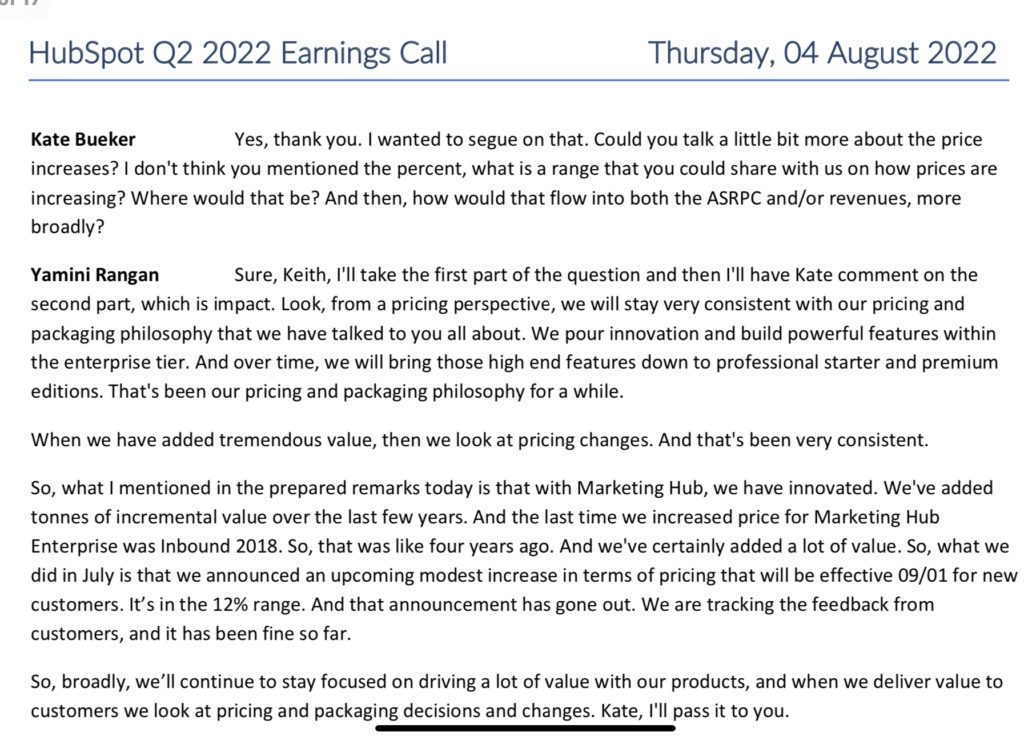It’s not just you. SaaS is getting more expensive, for a variety of reasons.
HubSpot, for example, which has been very judicious on holding the line on pricing and ACVs, raised prices 12% for the first time since 2018 — albeit only on new customers:
Slack also similarly did its first pricing increase in history recently, of about 10%:

Prices are going up in SaaS.
We put up a quick survey on LinkedIn to see how you were all thinking about raising prices — and the majority of you said you were planning to in 2023:
It’s a complex topic. Most of us, over time, end up driving up our ACVs, but it’s not always through price increases. And personally, I’m a strong advocate of not raising prices on early customers (see HubSpot above). At least, not without a lot of notice and warning. After all, they made a huge bet on you, and later, won’t really represent a huge amount of your customer base.
But inflation is real, and here on many levels. And the pressure to hit the plan is as intense as ever.
Raising prices on its own is just like a cookie. Tastes good, boosts your MRR and ACV for a bit, but then it’s gone. On its own, it doesn’t really change anything in terms of your new customer count growth. So don’t use a pricing increase to mask other issues. Or at least, be self-aware if you do. I see a lot of startups raise pricing during slower times. Maybe that’s OK if you’re honest about it bridging a gap.
Will we see SaaS products increase prices at or above inflation?
Webflow is increasing its basic pricing by 16.5%, and other plans 8-43% (!)
Not increasing SaaS prices has been common thanks to SaaS growth rates outpacing the need for increases. Did growth slow for Webflow? pic.twitter.com/p0OZiTwCAm
— Gergely Orosz (@GergelyOrosz) September 27, 2022
A related post here:



